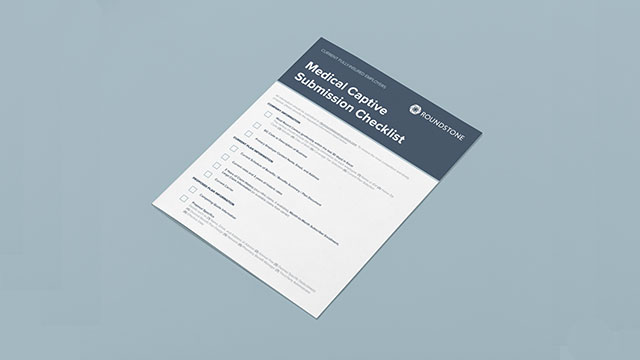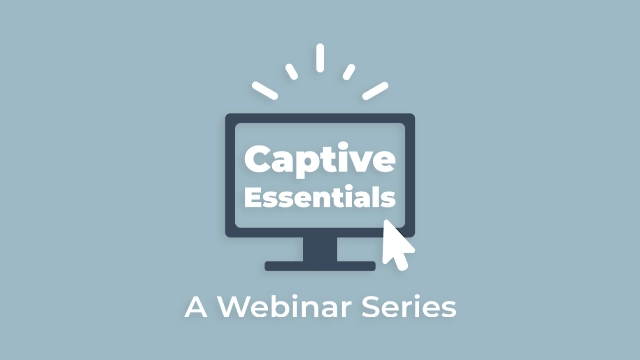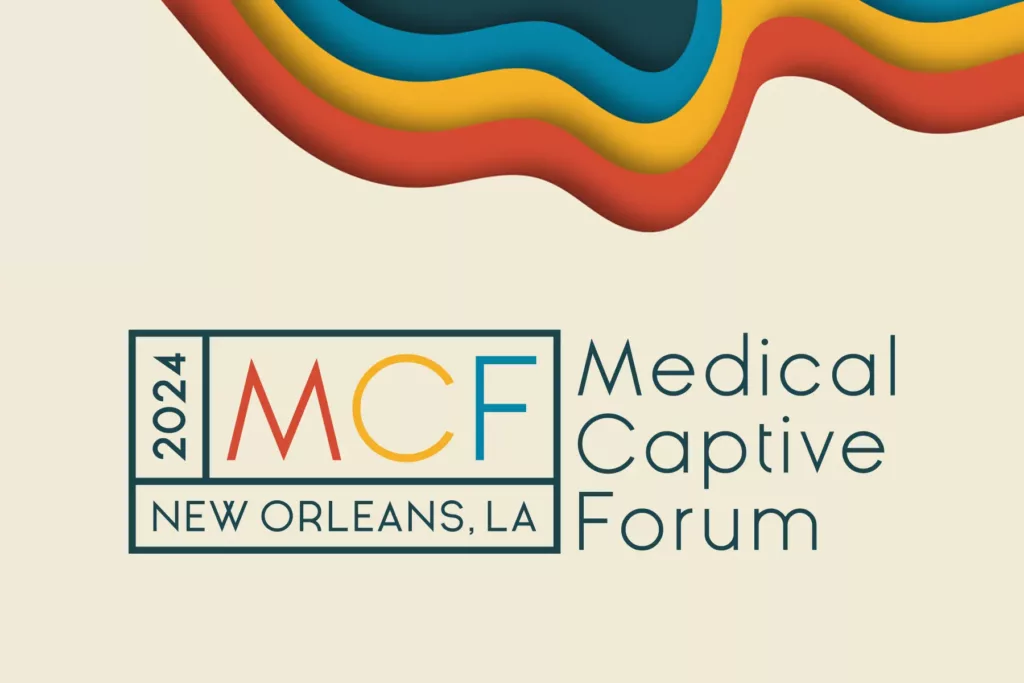Looking back, these last few years at Roundstone have been an exciting ride – we’ve managed a consistent nearly 30% growth rate, driven by the steadily increasing demand of the market. Why? What’s causing more employers to make the move to a self-funded stop-loss captive?
Simple. They’re caught between a rock and a hard place. Ask any employer come renewal season. The pain is real. The cost of health insurance keeps getting more expensive, and there are many reasons why.
Healthcare has become a top business expense, second only to payroll. In the last 10 years, the cost of health insurance has skyrocketed over 150% – and it’s projected to double in the next four years, according to a Mercer Survey. Employers as well as their employees are paying more. Everyone’s frustrated and unhappy when it comes to healthcare.
Increasingly, small to midsize companies are turning to a stop-loss captive to mitigate risk and make self-funding a safe, affordable, and viable option for their health insurance benefits.
Three macrotrends on the horizon will only increase the incentive for small to midsize companies to turn to a self-funded stop-loss captive as a solution to affordable benefits.
These include:
- Employers increasingly suing health insurers over undisclosed fees and undisclosed conflicts of interest.
- The expansion of genetically engineered and genetic treatment drugs, resulting in multi-million dollar prescription claims for employers that drive up the price of their plans.
- Hospital price inflation in the wake of the COVID-19 pandemic.
Here’s what to expect for the future and how companies that self-fund their benefits plans can leverage considerable advantage over these macrotrends.
Insurance Mismanagement: The Problem of Undisclosed Fees and Conflicts of Interest
Increasingly, employers are suing health insurance companies over pricing practices, accusing insurers of rampant mismanagement driven through undisclosed fees and undisclosed conflicts of interest. Employers are expected to ensure any claims paid and fees charged are reasonable. Yet the data that hospitals and insurers are now required to provide by law often prove otherwise.
Kraft Heinz Co., for example, filed suit against Aetna Life Insurance Co. because the company allegedly pocketed undisclosed fees and paid millions of dollars in claims that shouldn’t have been approved.
Amy Gordon, an employee benefits partner with Winston & Strawn LLP, told Bloomberg that the exorbitant fees have become “very problematic that over the years, that they have essentially added more and more types of compensation into the agreement.” Employers are obligated to ensure “that there are no hidden fees and expenses and limitations” on audit rights in the contracts they enter into with service providers, she added.
Such lawsuits have caused employers to be more proactive about the healthcare they buy. Self-funding under a stop loss captive offers both efficiency and accountability. Employers are under an obligation to their employees to deliver the best affordable care – and self-funding provides an efficient and affordable means to do so.
Roundstone ensures it always acts in the employer’s best interest by never charging fees from vendors or providers. Everything we do is aligned to deliver the best outcome for the employer and their employees.
The High Cost of Gene Therapy Drugs and the Impact on Insurance Plans
The FDA is approving genetically engineered, gene therapy drugs on a more frequent basis, causing an expansion in pharmacy spend on incredibly expensive medications. For example, one treatment of ZOLGENSMA to correct spinal deformities in newborns is $2.5 million. Similar gene therapy drugs are becoming more prevalent in healthcare plans throughout the country as the FDA continues to ramp up approval.
Under a self-funded stop-loss captive, you have several options to help mitigate these costs.
First, you will know if these medications are being used under your plan, so you can ensure that the genetic treatment is a good fit for the patient and the use of the medication is proper and effective.
Second, you have more ability to influence that these drugs are being provided at the most reasonable price possible. You can ensure the treatments are being done by a provider that has experience with these drugs and can negotiate the best rate. And you can implement pharmacy carve-out programs where you pay an upfront fee and the price of the medication is covered at a much more reasonable price point.
However, under a fully insured plan, these cost-saving options are forfeited. You are provided no data on how the drugs are being used under your plan, and have no control over how these drugs are being utilized and applied. Carve-out programs are not an option.
Yes, your insurance company under a fully insured plan will pay for the drugs as part of your coverage, but come renewal season your rates will skyrocket 50% to 80%, and will continue to do so for years, no matter where you choose to shop your insurance.
As Roundstone’s founder and president Mike Schroeder puts it:
“The horse is out of the barn, and there’s no putting it back inside. The barn’s on fire. If you’re not self-funding, you’re playing Russian roulette. Under a captive, you at least have a reasonable opportunity to manage that cost and deal with it.”
Even a large $2.5 million claim gets spread out across thousands of employees in the captive, so renewals under a self-funded plan remain minimal, he explained. A self-funded stop-loss captive ensures the cost remains reasonable, manageable, and predictable.
The Expense of Hospital Inflation in the Wake of the Pandemic
One reason healthcare is so expensive is the rising cost of hospital care, driven by inflationary pressures caused by rising labor and non-labor expenses in the wake of the COVID-19 pandemic. Between 2019 and 2022, hospital costs spiked 17.5%. Labor shortages after the pandemic led hospital contract labor expenses to jump up to 258% compared to pre-COVID levels, according to the American Hospital Association (AHA).
Since then, the problem has only gotten worse. According to a WTW 2024 Global Medical Trends Survey, global medical costs are projected to hit nearly double-digit increases in 2024, largely driven by global medical cost inflation.
Hospital costs for non-labor items like specialty drugs, medical supplies, lab services, equipment, and outsourced services such as food and nutrition have surged by 16.6% per patient since 2019. Furthermore, escalating health insurer regulations like prior authorizations, denials, and rigorous audits have imposed heavy strains on hospitals. This has not only led to heightened administrative expenses but also exacerbated burnout among physicians and nursing staff, diverting time from patient care and potentially compromising access and quality of services.
Self-funded insurance offers greater control over high health insurance expenses, including costly hospital rates. With self-insurance, employers can select more cost-effective hospitals for inclusion in the plan and utilize cost-containment strategies to reduce healthcare expenditures, thus enhancing the savings of a self-funded health plan even further.
The Guaranteed Savings of Roundstone’s Self-Funded Stop-Loss Captive
A self-funded stop-loss captive pools many small to midsize businesses together to level risk – essentially giving them the same risk predictability as a 1,000-person company, even if they only employ 25. A captive leverages the risk advantage of large numbers and empowers small to midsize companies to self-insure with the same confidence as a Fortune 500.
Under a stop-loss captive, smaller companies can self-fund their healthcare benefits and gain the affordable advantages corporate conglomerates have enjoyed for years. They only pay for the insurance they need – they get the insurance they deserve. On average, a company in Roundstone’s Captive will save 20% over what they pay for traditional insurance. And they get data-driven insights to further drive down costs while improving plan quality. They pay less for healthcare benefits while still providing their employees with high-quality care.
That’s why we’re so confident in offering our 5-year guarantee – you’ll save money over 5 years with our Captive compared to a traditional plan, or the difference is on us.














